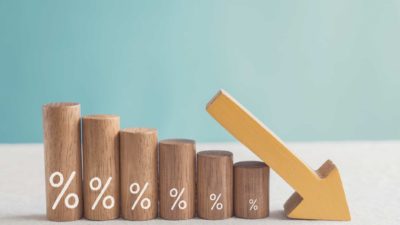S&P/ASX 200 Index (ASX: XJO) investors received a welcome reprieve yesterday from the Reserve Bank of Australia (RBA).
After raising Australia's official interest rates at 10 consecutive previous meetings, the RBA opted to pause its tightening cycle in order to properly evaluate the impact of the prior hikes.
The ASX 200 rallied 0.15% in the minutes following RBA governor Philip Lowe's announcement.
That leaves the official cash rate at 3.6%, for now.
But what can investors expect down the road?
What can ASX 200 investors expect from the RBA next?
While it would be nice if the RBA's prior rate hikes prove sufficient to bring inflation back within the central bank's 2% to 3% target range, that appears unlikely.
While Lowe eased off on the hawkish tones from earlier meetings, he did say, "The board expects that some further tightening of monetary policy may well be needed to ensure that inflation returns to target."
Here's what some of the industry experts are forecasting.
What are the experts saying?
Matt Simpson, senior market analyst at City Index, believes the pause won't be indefinite. But it may well last several months, which should offer some ongoing tailwinds for ASX 200 shares.
"The RBA concede that monetary policy 'may' need to be tightened, whereas previously it said policy 'will' need to be tightened," Simpson said.
"Even if further tightening materialises, they have allowed the potential for a terminal rate of 3.6%, even if it is a lower probability scenario," he continued. "And unless the RBA are presented with a surprise uptick on the quarterly inflation print, I think the RBA will be happy to sit with 3.6% for the next two to three months."
Josh Gilbert, markets analyst at eToro, cautions that following the April pause, any future rate hikes could come as a shock to ASX 200 investors.
"The board were quick to point to the recent banking issues overseas, and they clearly believe that the tighter financial conditions we're starting to see will do some of the RBA's job for them," Gilbert said.
"The caveat to this pause was the board leaving the door open to further hikes," he added. "Inflation has peaked but if it doesn't follow the path that the RBA wants, it could feel the need to re-tighten, which could be a big shock to the economy and financial markets."
Dylan Zhang, ASX equities analyst at Stake, said ASX 200 investors should be aware that more interest rate hikes are likely ahead.
"The pause comes as welcome news to investors, but it's unlikely this will be the last hike of the cycle," he said.
As for how this may impact investors' allocations, Zhang said:
Given the uncertainty over recent weeks, we've seen investors on Stake increase their allocation to passive index funds and gold ETFs. But as the pace of rate hikes appears to be slowing, it's likely we'll see more investors moving back into tech growth stocks.
National Australia Bank Ltd (ASX: NAB) CEO Ross McEwan believes ASX 200 investors should expect two more interest rate hikes from the RBA in 2023.
According to McEwan (quoted by The Australian Financial Review), "I have been out in the economy and there is still lots going on out there, and I think there is probably two to go."
Adding that "we need to get rid of inflation", McEwan said following two more rate increases "my thinking is the economy would have slowed enough to put on a pause".
We'll leave off here with Brett Reynolds, chief investment officer at Tiger Brokers Australia.
Saying inflation is "still incredibly high" despite having peaked, Reynolds is also expecting more rate hikes from the RBA in 2023, forecasting the official cash rate will reach 4.0%.
However, he doesn't expect the central bank to rush.
According to Reynolds:
The RBA will most likely hold rates again in May, but come the middle of the year another 25 basis point rise can be expected… For our local share market, this is likely to result in indexes hitting all-time highs. Our banks remain solid. April is likely to be a strong month on the ASX.
Should the ASX 200 indeed charge to new all-time highs, that would represent more than a 5% upside from today's levels.









